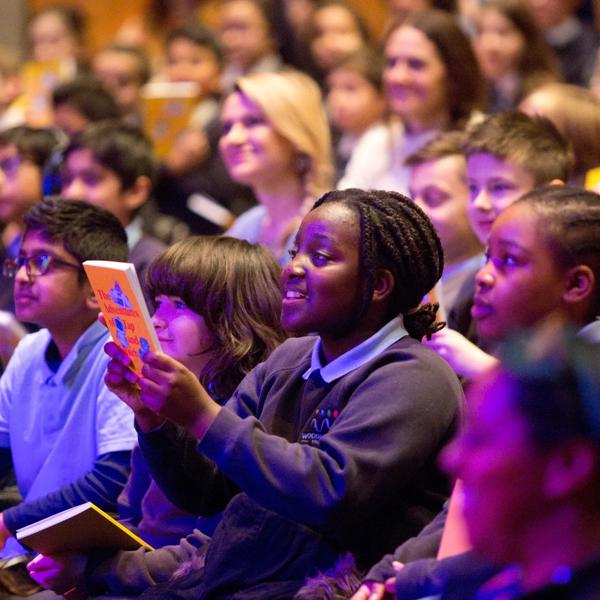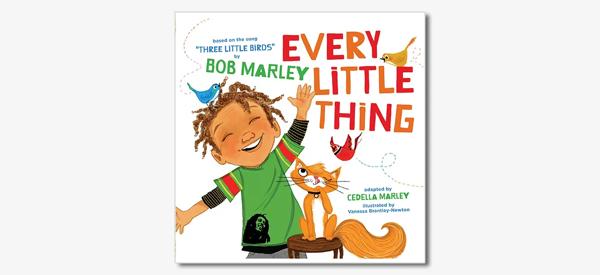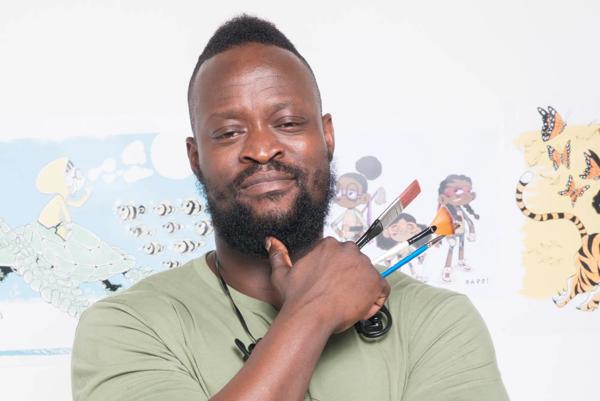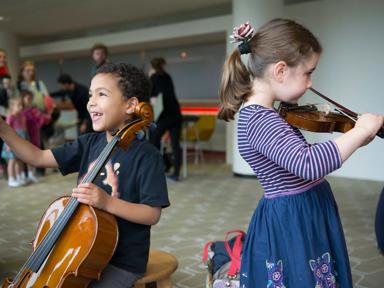Children’s books celebrating diversity & inclusion: tips & recommendations

Here at the Southbank Centre we believe passionately in presenting family events and activities with diversity and representation at their heart; both in terms of the artists who perform here, and the stories we tell through those events.
We’re committed to working even harder to ensure you, our audiences, echo this diversity, and that you get to see events and performances you feel are relevant, exciting and impactful.
Sadly we’re unable to welcome you to live events at the moment, but that doesn’t mean we can’t still fulfill our aims. Books are a great, and important, way of sharing stories and celebrating diversity. So we’ve invited our friends Jasmine Dellimore and Meera Ghanshamdas from the newly crowned Children’s Bookseller of the Year, Moon Lane Books, to share some recommendations.
Moon Lane Books share our values around diversity, representation and anti-racism, and we’re huge admirers of the work they do with children, families and schools. So, read on for Jasmine and Meera’s recommendations of stories for children and families that can help us explore and understand diversity and representation, and support us to have important conversations about race.

Since the killings of George Floyd and Breonna Taylor, and the ensuing cries for justice that reverberated around the world, we’ve seen an influx in the demand for diverse books. We have been inundated with people in need of books to help guide discussions with their children about race and representation. Since its conception, Moon Lane Ink has been a champion of diverse literature and so our expertise has been valuable when making recommendations and giving support.
As two people of BAME heritage, we strongly believe it’s important that books educating young people and families about race are read alongside books with representation and inclusivity. To have one without the other either risks the BAME experience being defined solely by struggle, or creating the belief that everything is idyllic in the past. We want to help people educate themselves and develop an understanding based on inclusion and empathy not sympathy.
The importance of representation
When building empathy among young readers it’s essential to recognise the importance of representation. When topics like friendship, emotions and family are explored through diverse characters it emphasises how universal these experiences are. No matter your race or ethnicity, we are all human and share the same experiences.

Atinuke’s range of picture books, including Baby Goes to Market and B is for Baby, are perfect examples of this. They demonstrate familial bonds while also representing African culture with their use of illustrations and the names of different characters and fruits.
Trish Cooke’s classic picture book, So Much, also shows the strength of family; every new family member we are introduced to loves the baby “so much”, while Cooke’s use of slang and vernacular is representative of Caribbean culture. These books are wonderful choices for learning about different cultures, but also for demonstrating the shared experience of family.
Books that tackle the issues

We have seen customers requesting board books to read to their babies. And there are some great ones; A is for Activist, ABC of Equality, Dream Big, Little Leader, Counting on Community, One Love and Every Little Thing. The latter two are favourites in the shop. They are based on two classic Bob Marley songs and are written by his daughter Cedella Marley. The thread that runs through each of these books is the strength and importance of a diverse community. Babies grow up understanding not only their own place within their community, but that everyone holds an equal place within society.
There are a range of powerful picture books that tackle difficult issues sensitively, thereby making them more accessible for younger readers. Kwame Alexander’s The Undefeated is a key title that explores the trajectory of the African American experience. It celebrates all that black people have achieved in the face of relentless adversity, from slavery to the Civil Rights Movement to the modern day. The combination of powerful prose and illustrations in The Undefeated gives this book broad age appeal and certainly makes it one that draws empathy from its readers. It touches on the dark and difficult periods in black history but largely focuses on the incredible achievements and successes.
There is also a need to tackle issues that are prevalent within BAME communities, but also in wider society. Lupita Nyong’o and Vashti Harrison’s Sulwe is the only picture book that explores the issue of colourism. Sulwe struggles to recognise her own beauty. She is darker than anyone in her family and at school and it affects her self-esteem and her ability to make friends. But after a magical journey into the night sky, she soon learns to love herself and realises that beauty comes from within. This book is a key title as it deals with an issue that is largely ignored within society and serves as an educational experience. It is also extremely empowering for anyone, young or old, who has faced discrimination because they have darker skin.

Nathan Bryon and Dapo Adeola’s Look Up! is a fantastic example of representation for children with dark skin. This picture explores the relationship between siblings; Rocket wants to be an astronaut, but she cannot seem to get her brother to stop looking down at his phone and look up at the stars. This book is a great exploration of the universal bond between brother and sister. Although it does not explicitly tackle the issue of colourism, both protagonists have dark skin which challenges certain prejudices and helps to normalise dark skinned characters as the heroes of their own stories.
Books that tackle the issues, for older readers
In terms of books aimed at children aged 8-12, there are numerous chapter books that deal with slavery, racism and discrimination. Catherine Johnson’s Freedom (1783) and Oh, Freedom! by Francesco D’Adamo both focus on slavery. Freedom (1783) follows Nat, a young boy who is forced to leave his family in Jamaica and travel to London with his master. Having heard that once a slave sets foot on English soil they are free, Nat begins to dream of liberty and hopes to buy his family’s freedom too. But he soon learns that enslavement has followed him to this new world and there are many obstacles on his journey to freedom.

Oh, Freedom! follows Tommy and his family as they journey toward freedom on the Underground Railroad. Both books are powerful and stirring in their depiction of slavery but are not so graphic that they are overwhelming to young readers. And though they deal with the subject of slavery, a horrific period of history for black people, their representation of family helps to bridge the racial divide. Both books explore their protagonists love for their family and their desire to stay together. As a result, rather than pitying this character we cannot help but empathise and connect with them on a human level. Any reader, regardless of race, will put themselves in Nat or Tommy’s shoes and feel empathy for their plight.
Inclusive books
Books that advocate equality, diversity, and inclusion are essential to building empathy and a future cohesive society Children need and deserve to see themselves and their experiences represented in the books they read, and it is also important that learn from a diverse range of experiences.
All Are Welcome Here by Alexandra Penfold and Suzanne Kaufman, is a magnificent picture book celebrating diversity and community. We follow a group of children from a school day to bedtime. Everyone has a space, a place and is loved and appreciated.

Felicita Sala’s Lunch at 10 Pomegranate Street is both a wonderful story and an international recipe book for kids. In each flat, someone is cooking-up a storm. Senora Flores is making a delicious black bean soup, Mister Ibrahim is making baba ghanoush. We recommend this book regularly for families as the recipes are simple to prepare, and a scrumptious meal for the entire family to enjoy. A delight for understanding culture through food across the globe.
Home by Carson Ellis reflects on the concept of home and what that means for different people. It can be a flat in the city, a house in the country, it can even be in the sea. The book is a visual kaleidoscope, portraying a range of experiences both real and fantastical.
All three titles depict an inclusive society and highlight different experiences in an optimistic way. But it is also important to have diverse main characters in stories which are about shared universal experiences. No Longer Alone by Joseph Coello and Robyn Wilson-Owen is a deeply sensitive book, subtly dealing with loss, feelings, the power of family and talking about your worries. The story is about a child who has lost someone close to her. It is a beautiful, poetic look at the process of grieving and takes the time to imagine and reflect on the experience.

Peter H Reynolds’ Ish is about a boy called Ramon who loves to draw. It is what makes him happy and he draws anytime and anywhere, but in an instant that changes. This a wonderfully simple story of the importance of letting your creative spirit run free rather than being hampered by ‘getting it right’. We often work with illustrators and school children and many children at the workshops become frustrated by their drawings not being perfect, which stifles creativity. The book encourages readers to learn to find the beauty in making ‘mistakes’.
The Incredible Hotel by Kate Davies and Isabelle Follath is a glorious picture book with a great underlying message of not giving up on your dreams. The illustrations across both pages give the book a Wes Anderson-like quality and the story is full of humour and drama. We can virtually smell the caramel!
Tips for reading the books and talking to your children
Family conversations about racial discrimination can be difficult, and will be different for every family. But it is important to have the conversation, silence is not an option and starting young is crucial. It is never too early to celebrate diversity. Whether you are trying to explain your own experiences or educate your children, books are an important tool to beginning the conversation and building empathy and a cohesive society. It is also important to find our own voice within these discussions and it is ok to not have all the answers with children.
Critical to our operations at the Moon Lane Group is that this is not one race against another, it is a fight against racism; for change to be long lasting, we must learn to call out racism and discrimination at a young age.
Huge thanks to Jasmine Dellimore and Meera Ghanshamdas from Moon Lane Books. If you wish to order any of the books featured in this blog, you can do so through Moon Lane.
